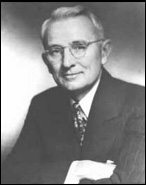We are often guilty of making a big mistake when we are performing assessments. This applies to both rehabilitation and fitness specialists.
Imagine this scenario, your throat hurts so you go see your doctor. Your doctor takes pride in being thorough and “getting to the root of your dysfunction.” Over the course of the next 30-minutes you find out you have high blood pressure, are technically obese, maybe pre-diabetic, have psoriasis on your scalp, and maybe even a little athlete’s foot.
Your next question has to be, “but what about my throat?” Your doctor responds, “Oh it’s nothing, probably a little post-nasal drip from seasonal allergies.” Do you leave the doctor’s office happy that you don’t have strep throat or are you depressed that your throat is fine but that your health is a ticking time bomb?
Now I am obviously a fan of thoroughness and preventative medicine, however sometimes we are guilty of overloading our clients with everything that is “wrong” with them. How many times do you think we do this in our professions?
How many times has a shoulder patient come to you and you find 40 things wrong with their arm, spine, and legs? How many times has a fat loss client come to you and you are focused on their poor rotary stability and shoulder mobility?
The problem with these three scenarios is not your thoroughness or your findings from the assessments, it is with your delivery. We recently were all guilty of this when we all discussed my article on assessing overhead arm elevation. We found a lot of flaws but not a lot of positive findings!
The Dale Carnegie Approach to Assessments
 I started to teach the concept of what I call the Dale Carnegie approach to assessments (If you don’t get the reference, you have some reading to do). I mentioned this briefly during the lumbopelvic assessment I perform in my Functional Stability Training of the Lower Body program but wanted to expand on this topic. (photo from Wikipedia)
I started to teach the concept of what I call the Dale Carnegie approach to assessments (If you don’t get the reference, you have some reading to do). I mentioned this briefly during the lumbopelvic assessment I perform in my Functional Stability Training of the Lower Body program but wanted to expand on this topic. (photo from Wikipedia)
Here are a couple of key principles of how I implement the Dale Carnegie approach to assessments.
Sandwich The Negatives with Positives
Next time you are assessing someone, try this simple task – start and end with something positive. Try to avoid just bombarding your client with all their flaws, which is really easy to do. Let’s be honest, we are trained to see the negatives, and you are probably really good at it, right? Your assessment should not be about finding everything that is wrong with your client to show off your intelligence. There need to be some positives as well.
What about someone who really has a lot of flaws? In this case, perform your thorough assessment, take detailed notes, but try to limit what you share with your client to what is only needed to 1) help them reach their goal, and 2) allow you to perform your job as best as you can.
If you can’t find any positives (you really should…), compliment them on their haircut, new sneakers, or anything else, but find something!
I also try to explain that no one is perfect and talk about some of my own flaws. This seems to relieve a little tension, but your client is still going to focus on themselves. So try to give them some positive to shift their focus.
Arouse in the Other Person an Eager Want
A little earlier in this article we mentioned the fat loss client. My friend Pat Rigsby and I were talking recently and he asked an interesting question, “Do you think someone who comes to you for fat loss really cares about their shoulder mobility?” This was a pretty great thought. I think we sometimes get a little caught up in what “we” want to do with our clients instead of what our clients want.
Again, this doesn’t mean to avoid assessing their shoulder mobility, but rather, talk in terms of your clients’ interests. You need to connect the dots, as Ryan Ketchum likes to say, and help your client see how addressing your assessment findings are going to help them achieve their goals.
Taking this another step, don’t forget more classic Carnegie wisdom by using encouragement and praising any improvement. This is important for each session and during re-evaluation periods. If your clients are seeing gains in “their” goals and “your” assessment, they are going to make the correlation.
Next time you have a new client, try using my Dale Carnegie approach to assessments and see what happens – Let me know in the comments below!
[hr]




